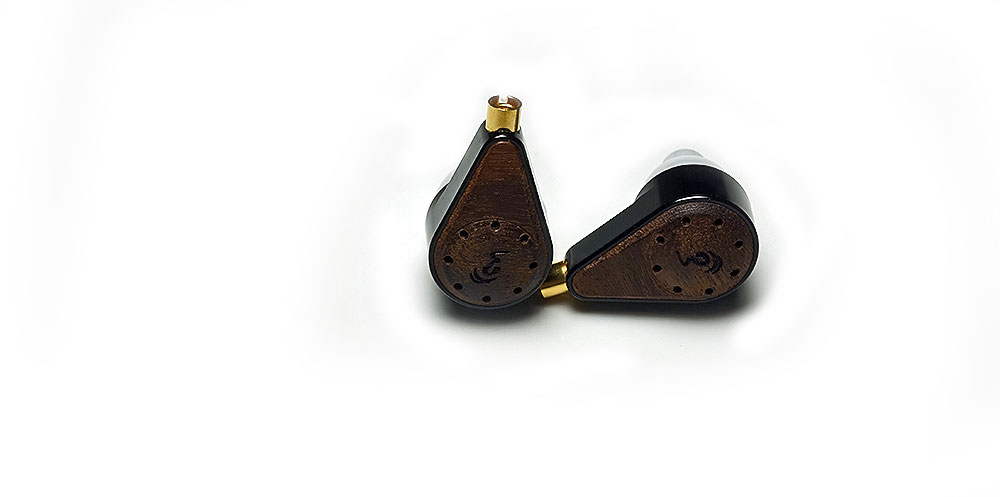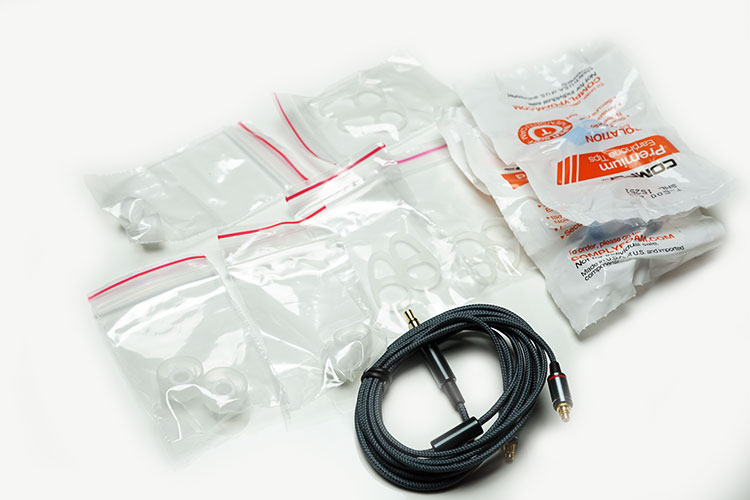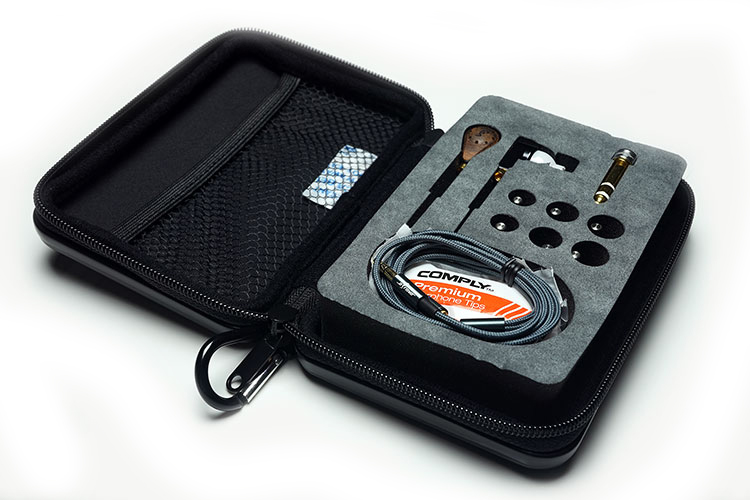The Obravo Audio EAMT-2c is a semi-open hybrid dynamic and AMT driver combo universal IEM from Taiwan. It is priced at £2899.
Disclaimer: This Obravo Audio EAMT-2c sample was sent to us for the purposes of this review. Thank you to the team from oBravo for giving us this opportunity.
To read more on oBravo products reviewed on Headfonics click here.
Note, this review follows our new scoring guidelines for 2020 which you can read up on here.
I often laud earphone and headphone makers for event-driven product launches. The likes of ALO is a prime example, also Audeze in many respects. Companies who can put out a product with fireworks and capture your attention.
Then there are companies who soft launch, or perhaps not into the whole marketing thing, and gain respect through word of mouth or through reviews such as this. I tend to classify oBravo as the latter rather than the former.
A good example is when Audeze proudly announced their first-ever planar IEM this month, Obravo has been walking the walk for almost a year now. A lot of people did not know that and that is a shame because they are pretty good at what they do.
Flagship Level
The EAMT-2C is a whole different ball game to the ERIB-5A I reviewed a few months back. This is a $3000 universal IEM and as such probably one of the most expensive IEM’s you can buy in the market today.
It is also very hard to find any information on it, not a huge amount of people are talking about it and just a few outlets are in gear to sell it. I know it is early days but the EAMT-2C is quite possibly the best universal IEM I have heard to date. If you get a chance to listen to it in a quiet area I highly suggest you do so.
Tech Inside
Of course, you may think it must be the best given the price. Whilst price does always play a subconscious role in how we rate gear, almost unduly harshly with a big critical eye I might add, the EAMT-2C’s value point is driven also by the technology inside the EAMT-2C which is rather unique, and according to oBravo, rather expensive to assemble.
In short, the EAMT-2C is a hybrid IEM but it is not the usual BA/DD design, instead, it is a low-end specialized DD combined with a high-end AMT setup.
AMT
oBravo are pitching what they call an Air Motion Transformer design as the bedrock of this IEM’s high-frequency performance. This, however, is not oBravo in-house technology, or at least the fundamental principle behind it is not theirs. AMT technology first found its way into speaker design back in the 1970s, the most high-profile of which was the AMt1 speaker by ESS.
AMT is an electroacoustic transducer, unlike traditional planar ribbon designs. In contrast to a planar ribbon, the diaphragm of an AMT is of a pleated shape similar to a bellows design, (think of an airbag). Unlike conventional diaphragms, AMT diaphragms are made of mylar ribbon, bonded with conductive aluminum strips.
Moving Air Faster
They are designed in such a way to have a much lower mass than conventional diaphragm with a much smaller surface area, by up to 80% on traditional speaker designs. This mylar ribbon diaphragm is then suspended within a dipole magnetic field creating a very tight and tense pressure environment.
That basically means when a signal is passed through the folded pleats of the mylar ribbon design it moves air a heck of a lot faster than conventional designs, up to 5 times faster. As such, AMT is perfect for exacting or demanding treble performance where conventional designs might struggle to keep up with complex high-frequency reproduction.
NDD
On top of this oBravo has coupled their AMT with a neodymium dynamic driver (NDD) inside the EAMT-2C for the low to midrange reproduction on the EAMT-2C (AMT mainly covers treble though technically it can get down to around 400Hz if tuned as such).
Neodymium is the poster boy for speaker magnets in the audio world, costing a lot more than ferrite despite its more corrosive properties. They generate a ton of magnetic force, more so than generic dynamic drivers for their size.
This allows smaller neodymium drivers with equal performance to larger ferrite drivers to be produced which is ideal for the EAMT-2C size and design. In short, they are not cheap, usually only in higher-end cans but the performance of this driver should outshine much larger regular dynamic drivers particularly in bass performance.
Design
The EAMT-2C has a slightly more unconventional looking universal design than the ERIB-5a planar entry-level IEM we reviewed previously. It still sports fairly long stems with that modified MMCX connection but this time the shell is more teardrop in design than the ERIB-5a bullet form factor.
The materials are also far more lavish, to put it mildly, with a dark wood plate finish sitting on top of a crafted two-tone aluminum and ceramic shell (coffee brown and white). The wood plate itself is perforated with 8 small holes to allow the driver design to breathe and as such, I would classify this IEM as being rather open in nature.
From the chamber to the nozzle tip the EAMT-2C is rather a long design, certainly longer than the ERIB-5A. The nozzle itself is not terribly long and has just enough length for the supplied T-500 Comply tips. Rather the bulbous ceramic white chamber finish behind it which adds more to its length.
At 35g, you could classify the EAMT-2C as being a larger than average universal IEM though not as huge as say the double DD contoured units such as the UM Merlin or the IT03 from iBasso.
You can also order the EAMT-2C in an all-aluminum or all-wood enclosure which does change the sound signature. The aluminum will give you a more neutral presentation and of course, wood will tip it to a warmer tone.
The ceramic, on the other hand, has been described as offering a more weighted and textured low end with a “lavish” soundstage. It is considered the high-end version of the 3 options available and it’s the kind of sound signature that sounds the most enticing of the three.
Comfort & Isolation
Despite the long stems, you can wear these over the ear or straight down. You might look a touch odd with the over the ear look but in terms of comfort and seal it has a slight edge over the straight down option which tended to get in the way of everyday activities.
With the 8 perforated holes, the EAMT-2C is really more of an open design with almost no background passive noise isolation to speak off. This is not a commuter’s choice, certainly not a choice if you want custom level sealing but when the music is playing it does a reasonable job of keeping unwanted intrusions out.
Certainly, the inclusion of Comply tips helps tremendously in getting some sort of quality fit and they do stay nicely in place once inserted.
Cables
The cable is quite similar to the ERIB-5A cable being around 1.2m in length, lightweight, and covered in a nylon sleeve. This time though the cable sleeve is a more subdued gray color than the more glaring stripy white of the ERIB-5A cable.
If you have a few extra bucks I would recommend also acquiring oBravo’s balanced version of this cable which, in the right amp, has some considerable sound improvements over the unbalanced stock cable.
The cable is terminated at the top with a modified gold-plated MMCX connection which is rounded in shape rather than the slightly irregular design of stock MMCX connectors.
That does mean aftermarket cables will not work with the EAMT-2C sadly so you are stuck with those very long stem form factors on the EAMT-2C. Thankfully they never seem to get in the way when using them with the main shell sticking out just enough to keep them from pressing against your outer ear.
At the bottom, the cable is finished with a regular straight jack 3.5mm gold-plated stereo plug. I would love to have seen a right-angled plug with a stronger strain relief rubber. Given the MMCX is modified the plug on this cable is perhaps a touch thin-looking with decent but not mind-blowing strain relief. You really do not want this jack breaking on you given the price tag.
Accessories & Packaging
Obravo retail packaging is akin to Tesco value brown boxes, not much to write home about and best throw it away because what is inside is pretty cool.
Unlike the rather slimline wraparound case of the ERIb-5A, the EAMT-2C comes inside a very large but professional black zippered semi-hard case. It looks the business, to be frank, and though perhaps a touch too big for everyday portable use it does an excellent job protecting your $3000 EAMT-2C’s in your bag, desk, or home.
Open it up and inside you get a decent range of accessories all housed in a large foam block with specific cutaways for each type of accessory and the earphones themselves. Accessories include:
- 3 x T-500 Comply foam tips (small, medium & large)
- 3 x Single bore silicone tips (small, medium & large)
- 3 x ear hooks (small, medium & large)
- 1 x gold plated quarter jack converter
- 1 x metal belt clip
You will notice to the side of the packed tips bags there are 6 holes in the foam with small metal poles. Do not try to pull them out, they are meant to be stuck there and are used to basically impale your tips of choice for when you are out and about and want a quick change.
Should they fall out then a quick superglue on the bottom will sort it out, (yes I pulled the first one out, sorry I don’t read manuals, I am a guy).
Sound Impressions
Summary
In a word, breathtaking. Tonally if you have heard how electrostatics work with sound then this AMT transducer design combined with an NDD driver is not that far off. It is a wonderfully spacious slightly mid-centric tonal presentation with incredible detail, resolution, and articulation. It makes all other flagship custom monitors and universal IEM’s seem rather dull and lifeless. It has pace and speed to burn.
The soundstage is just massive and the imaging is pretty much on the money. Extension on either end is deep and tall with a very holographic presentation but it is not unnaturally stretched either like the HD800 or the VE6XC.
This is not what you would call an analytical presentation, far from it. It is a huge lavish sounding airy presentation with a spot-on balance between attack and decay right across the spectrum to make it possibly one of the most natural-sounding in-ear monitors I have heard to date. Putting these on is akin to putting on a very good open back headphone.
Bass
The response curve of the EAMT-2C is more n-shaped than anything else so bass quantity is not huge and from 20Hz right up to around 1k in the mids it is on an upwards curve. You will not get a fat heavy-handed low end with this IEM but on the other hand, it’s a very even and linear climb without any midbass coloration.
What I love about how the EAMT-2C presents bass is the fantastic definition and body. It’s fast, it is tight but it is very well defined. It is not fat, thick, or rich sounding but it does hugely benefit from the space afforded to the EAMT-2C meaning instrumental low-end notes are clearly heard.
Side by side say a 64Audio A12 bass impact and quantity will always favor this multi-BA design but its layering and definition are miles behind the EAMT-2C. The NND driver does an excellent job here of conveying natural-sounding, evenly balanced, and well-defined bass.
Mids
From 1-4k the EAMT-2C shows an elevated response putting vocals front and center before plateauing slightly into the presence and treble response right the way up to 10k. The top of the n-shape is incredibly well controlled with only very minor peaks at 3k and around 8k (brilliance).
Again, the open-ended airy sound of the EAMT-2C hugely benefits the midrange performance. Instrumental separation and layering are accurate with very natural and lifelike timbre.
Vocal presence is elevated and to the fore for both male and female vocals and it suffers from zero sibilance. Texture and detail, particularly in female vocals are very impressive with just the right level of attack and decay. It is neither too sharp nor too soft and sounding incredibly refined.
Vocals on the EAMT-2C are so open and almost euphoric in a sense that other flagship IEMs such almost dull, soft, and lifeless, and that is saying something. For those that think this means bright or very intimate, I can tell you that is very wide of the mark. Think Stax, think effortless and you will hit closer to home with the EAMT-2C midrange presentation.
Treble
Instead of an unnatural peak to accentuate the perception of treble clarity the EAMT-2C actually has a minor dip from 4-6k suppressing any unwanted peaky responses. It is nothing major but just enough to check any unwanted coloration from creeping into a very airy and coherent treble response. Bear in mind this is where the AMT transducer really starts to make a qualitative difference to the signature.
Obravo has instead opted to just elevate the brilliance region ever so slightly to add even more headroom to an already very airy and spacious top end. Treble on the EAMT-2C AMT transducer is unrivaled in terms of refinement, clarity, and extension. Even the Andromeda’s already excellent resonating chamber treble signature sounds dark and shelved down in comparison.
Yet it is never strident or overly forward at the same time. It is very rare indeed you get such an abundance of detail and speed in a treble response without the accusation that it sounds overly bright but the EAMt-2C is just such an IEM. Only past 10k does it start to roll off and even then its gradual and controlled.
Click on page 2 below for Matchability & Comparisons









